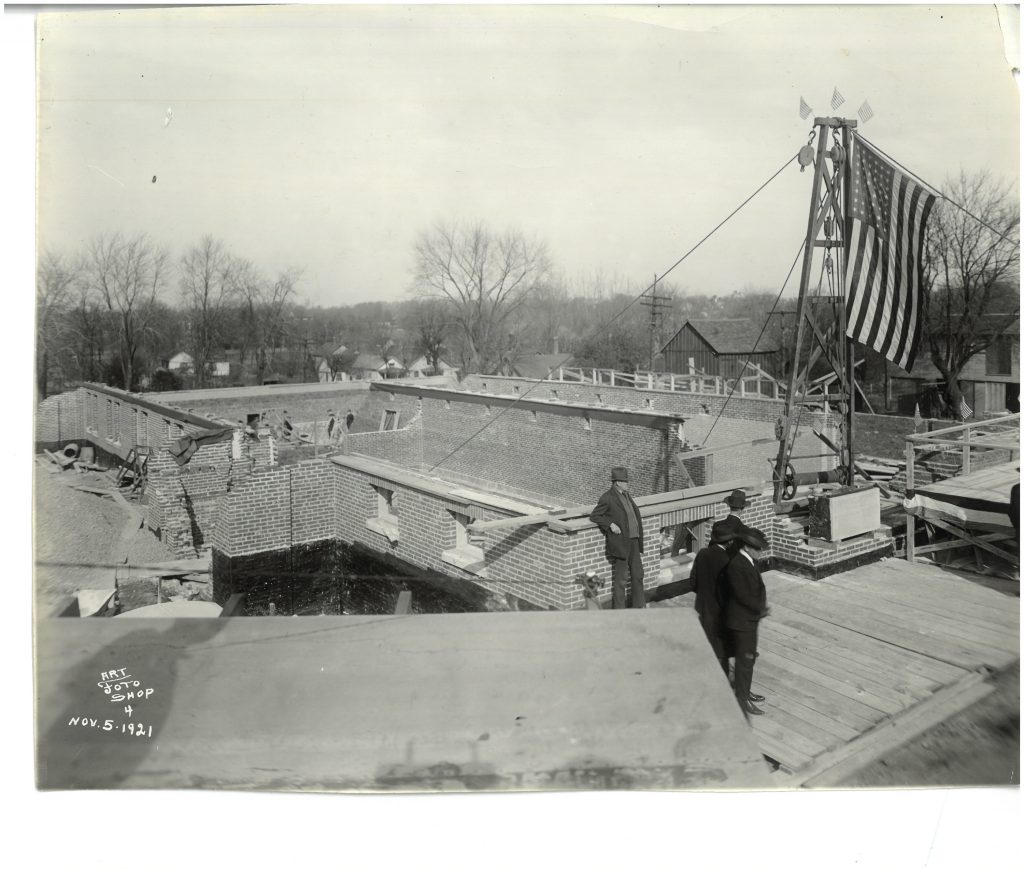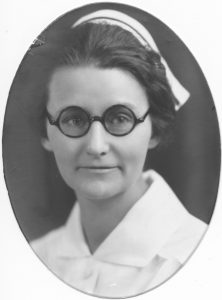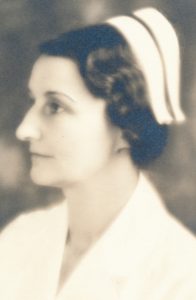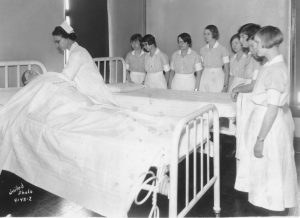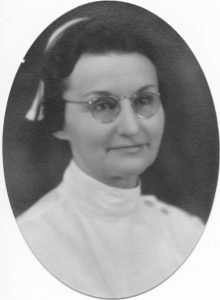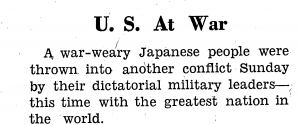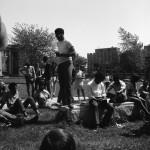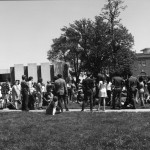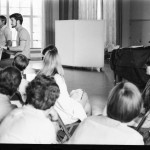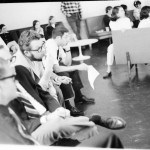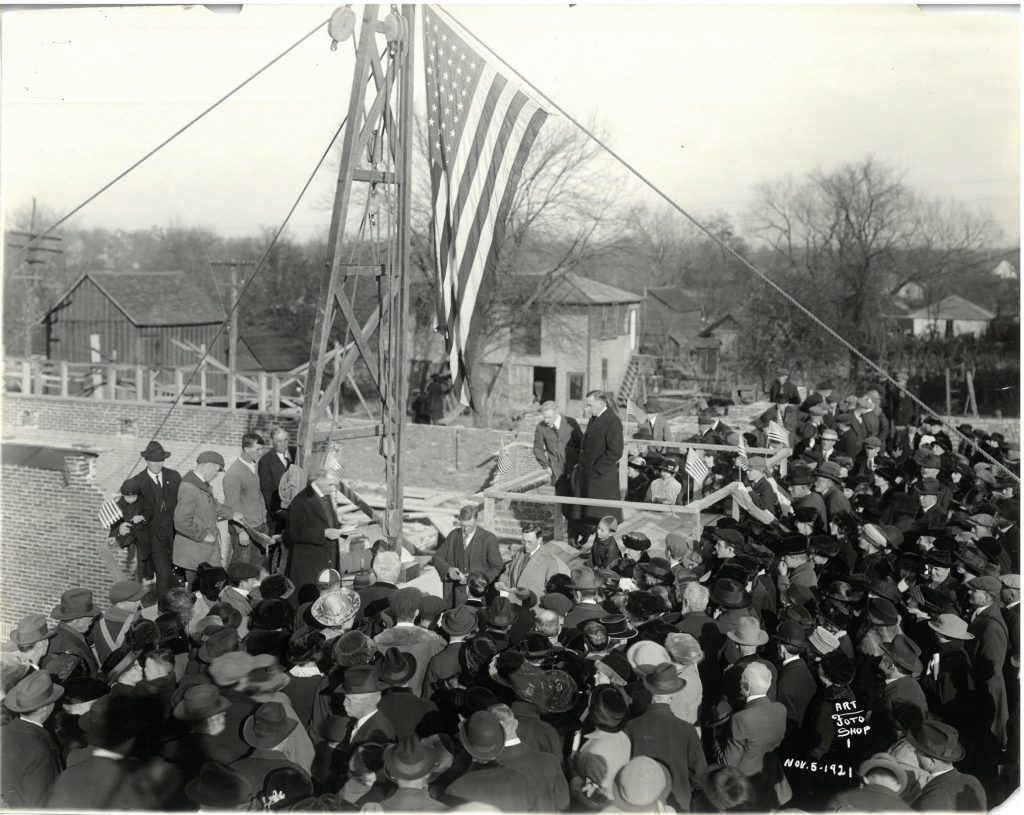
(click to enlarge) The man in the light colored jacket who is facing the camera is famed local architect Arthur Pillsbury
This photo shows a large crowd gathered on November 5, 1921 to place the cornerstone in the Memorial Gymnasium. Look to the left of the man standing below the tip of the flag and you will see a small box resting on top of the stone. That time capsule will be opened Sept 30, 7PM on Kemp Commencement Plaza.*
Anyone who came to IWU after 2002 would know the building as the Hansen Student Center. The building was originally dedicated to the memory of IWU personnel who died in World War I, hence the name Memorial Gym.
This post is dedicated to honoring the efforts it took to locate that small box in a stone that’s 48″ wide x 25″ high and 17″ thick. The thickness of the cornerstone was unknown up until this week! There is a program for the event with a line that says E. Mark Evans would be “placing box in cornerstone” (pictured below).
The photo of the crowd (at top of this blog post) and another one from the same vantage point but without people are the only visual clues about the time capsule and stone in the University’s archives.
Director of Physical Plant Jim Blumberg assigned the work of pinpointing the time capsule’s location to John Zmia, a mason with Western Specialty Contractor. After testing the thickness by removing bricks at the top of the stone on the outside of the building, Zmia determined that extensive brick removal would be needed. In consultation with our Physical Plant personnel, they concluded that the best approach was to work from the back of the stone.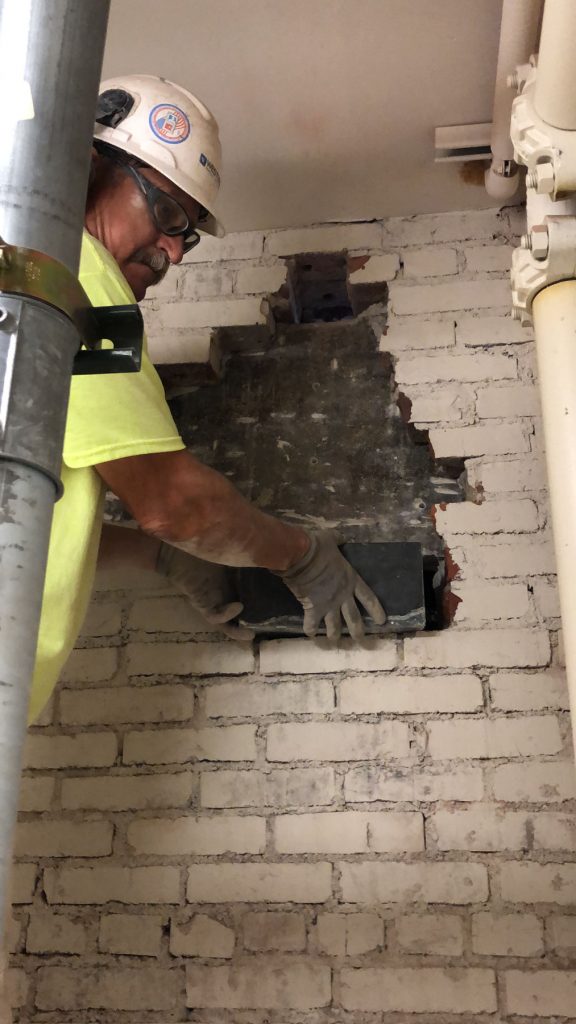
Blumberg said the effort to find the box’s location in the stone took about 12 hours over two days and then 3 hours of chiseling the cornerstone to get to it. Blumberg took this video of Zmia removing the time capsule from the stone on August 31, 2021.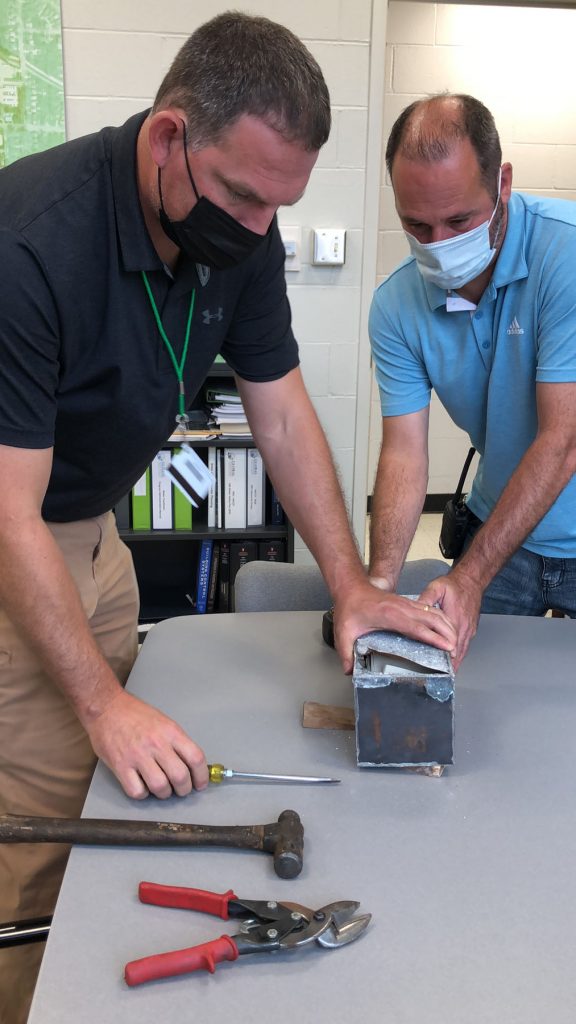
This is the third time capsule we’ve recovered since 2011** and it is our tradition to pre-open the box for safety reasons and then hold a public event to remove the contents. This time the work of opening fell to Manager of Maintenance Kenton Frost (on the left) and Supervisor of Building Trades Matt Gentes.
Because the building is now a student-centered space, Student Senate is conducting the opening event. Stay tuned for an event announcement!
*Student Senate is hosting the event and we are hoping Tom Hansen will be on hand since the Gym-to-Hansen renovation is 20 years old. The event will be livestreamed as part of virtual Homecoming activities, so be sure to sign up!
**The other two were removed from Sheean Library and the Mark Evans Observatory, which was named for the person who placed the time capsule in the Memorial Gym!


